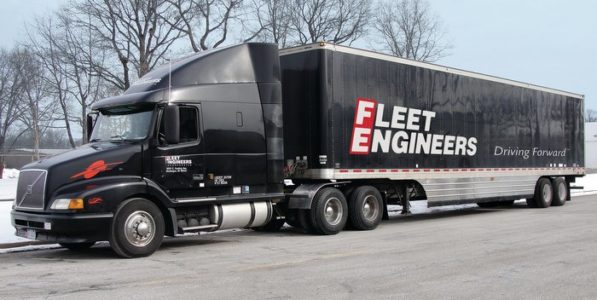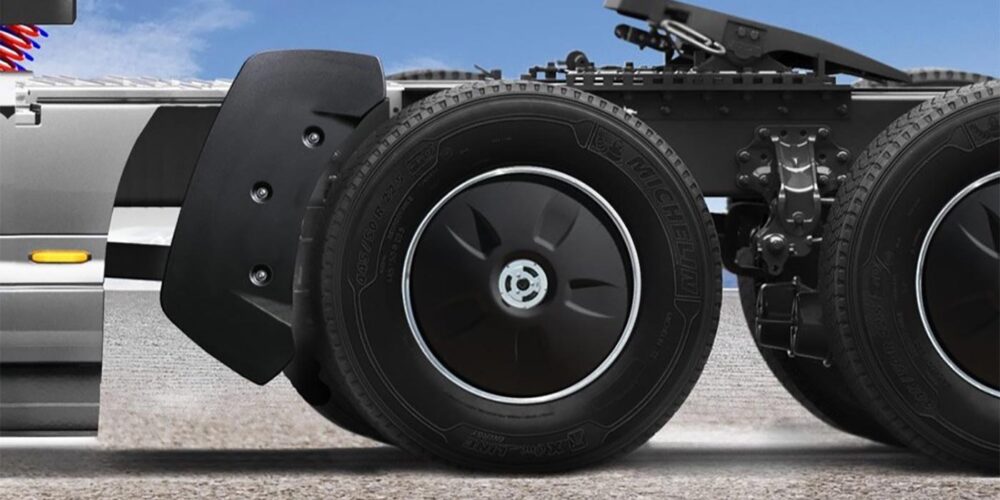The North America Council for Freight Efficiency (NACFE), which partnered with the Carbon War Room (CWR) to form Trucking Efficiency, recently released a Confidence Report to provide an unbiased review of tractor aerodynamic technologies available on the market today, and to increase investment in cost-saving tractor aerodynamic technologies.
Tractor aerodynamics increase fuel efficiency by lowering air resistance so that less fuel is needed to move down the road as speed increases. The per-vehicle fuel economy benefit of optimizing the aerodynamics of a tractor can be quite high—the few classic sleepers that are operated in over-the-road applications today are a full 30% less fuel efficient than a modern, aerodynamically optimized tractor. Given these potential savings, the optimization of the aerodynamic performance of a tractor is very much worth pursuing as part of spec’ing a new vehicle.
The report suggests that tractor manufacturers should design and make available aerodynamic features for day-cab tractors, including those on natural gas tractors, since the industry migration to shorter hauls will likely result in more day-cabs seeing significant highway and interstate miles.
Technologies
Tractor aerodynamic technologies and strategies are constantly and rapidly evolving. The options detailed in the report are all currently available on the market, as part of each OEM’s aerodynamic base model—their function as a fuel-saving design modification is well-proven. New technologies and/or regulatory changes that open the door for platooning, long combination vehicles, and longer trailers could significantly improve aerodynamics and increase fuel economy.
Future EPA and NHTSA greenhouse gas regulations will challenge tractor builders to continue to improve the aerodynamic drag beyond what has been demonstrated in the Department of Energy SuperTruck programs. OEMs will need to look more closely at aerodynamic designs for new models.
Can’t get enough columns and features from Carol Birkland? Click here to read all of her articles.
Recommendations
The scope of the Confidence Report focuses on aerodynamic options for two types of on-highway tractors pulling single van trailers: the sleeper tractor and the day cab. While aerodynamic improvements are technically possible with all vehicles, and many are actively being researched, the greatest opportunity in terms of miles driven and fuel use is with the on-highway van trailer segment—both day cabs and high-roof sleepers.
The report begins by discussing the aerodynamics of OEM base model tractors, and then explores many specific “areas” on a tractor on which a fleet may choose to seek additional aerodynamic optimization and fuel savings.
The report states that the OEM model is the first option in aerodynamics for on-highway van haulers that a fleet will encounter, and many fleets should look no further in optimizing their aerodynamics, as the aerodynamic OEM models will have already been extensively optimized at the complete vehicle level to provide the best performance for a significant portion of their customer base. However, not every customer will see the same performance gains due to application, duty cycles and other factors. Moreover, fleet choices can impact tractor aerodynamics in two ways.
First, fleets can choose to remove aerodynamic options that were included in a base model. Depending on the features removed, it could result in as much as a 10% decrease in fuel efficiency.
Second, fleets may make other non-aerodynamic changes to the base model tractor that in turn reduces its aerodynamic performance. Because this performance loss may be inadvertent or unexpected, it is recommended that fleets work with their OEMs to review their tractor’s aerodynamics once more at the end of the spec’ing process, and check for opportunities for further optimization. View the complete report here.














